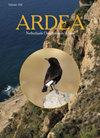Great Cormorants Phalacrocorax carbo in the Netherlands: Five Centuries of Protection Amidst Almost European-Wide Persecution
IF 1.3
4区 生物学
Q3 ORNITHOLOGY
引用次数: 1
Abstract
Historical sources from European countries show that the persecution of Great Cormorants started centuries ago and was widespread. As an exception, in The Netherlands protective measures for Cormorants were declared from 1500 onwards. In this paper an explanation is given for this striking difference. In The Netherlands, Cormorants were game species and a food source. To make this use sustainable, Cormorants were protected. In other countries, Cormorants were neither considered to be a game species nor a source of food. On the contrary, in most countries Cormorants were seen as pest birds. They were persecuted to protect the pond culture of fish. In The Netherlands, however, this kind of pond culture was uncommon. Because of these differences with the rest of Europe, in The Netherlands the general opinion was more in favour of protection than of persecution. In consequence, the Dutch population of Cormorants was much larger than elsewhere in Europe. The survival of this Dutch population amidst the depleted populations in other countries was an important prerequisite for the increase of the European Cormorant population in the 20th century.荷兰的大鸬鹚:在几乎全欧洲范围的迫害中五个世纪的保护
来自欧洲国家的历史资料表明,对大珊瑚虫的迫害始于几个世纪前,而且很普遍。作为一个例外,荷兰从1500年起宣布了对Cormorants的保护措施。本文对这一显著差异作了解释。在荷兰,Cormorants是猎物和食物来源。为了使这种用途可持续发展,对Cormorants进行了保护。在其他国家,Cormorants既不被认为是猎物,也不是食物来源。相反,在大多数国家,Cormorants被视为有害鸟类。为了保护池塘养鱼,他们遭到迫害。然而,在荷兰,这种池塘文化并不常见。由于与欧洲其他国家存在这些差异,荷兰的普遍意见更倾向于保护而非迫害。因此,荷兰的Cormorants数量比欧洲其他地方要多得多。荷兰种群在其他国家种群枯竭的情况下生存是20世纪欧洲Cormorant种群增加的重要先决条件。
本文章由计算机程序翻译,如有差异,请以英文原文为准。
求助全文
约1分钟内获得全文
求助全文
来源期刊

Ardea
生物-鸟类学
CiteScore
2.10
自引率
0.00%
发文量
49
审稿时长
>12 weeks
期刊介绍:
Ardea is the scientific journal of the Netherlands Ornithologists'' Union, and is published since 1912. The journal welcomes manuscripts reporting significant new findings in ornithology, in particular those covering the ecology, life history, and evolution of birds, and including sound descriptive work. Ardea publishes Original research papers, Short notes and Book reviews. In addition to the regular three issues per year, Ardea publishes specials that contain conference or workshop proceedings (produced on request).
 求助内容:
求助内容: 应助结果提醒方式:
应助结果提醒方式:


